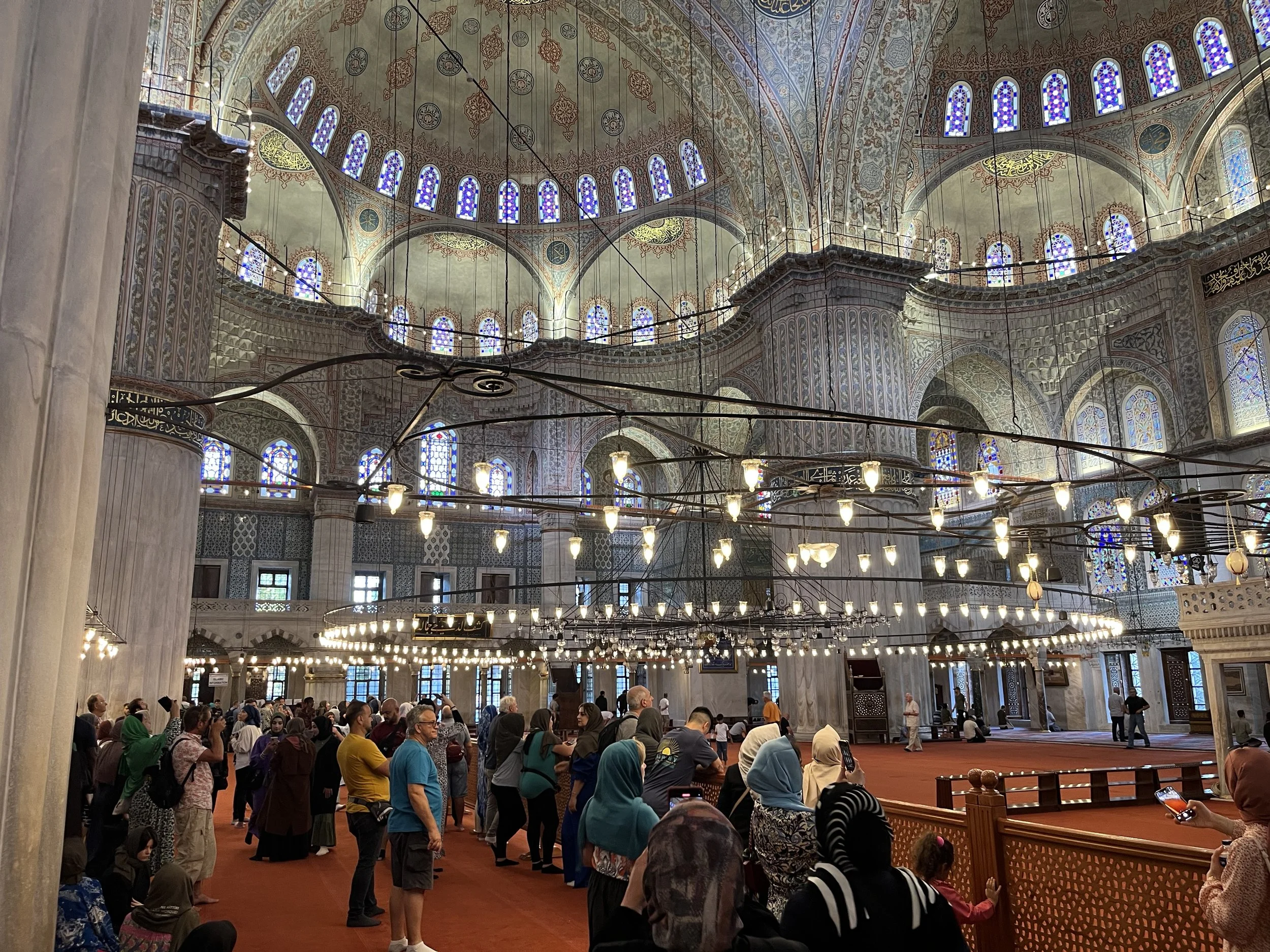Vacation Part 2- Crossroads of Empires
The Bosporus, Sea of Marmara, and the Dardanelles region has been pivotal since the beginning of written history. The region is at the western end of the Silk Road. It is at the eastern end of the Mediterranean sea lanes. It is the southern terminus of the river complex reaching all the way to the Baltic Sea. It is the place where Europe and Asia stare each other in the eye. It’s been a flash point forever, and still is today.
To really appreciate Byzantium/Constantinople/Istanbul, the visitor needs to know a little bit about the history. In short, it has seen the rise and fall of several empires and cultures. The first known settlement dates back 7,000 years. The city of Byzantium showed up when Greeks settled the area around 2,600 years ago. The Romans took over about 2,200 years ago, and the city name Byzantium survived for another half millennia until the Roman Emperor Constantine made it the capitol of the new Eastern Roman Empire in 330 AD. He renamed the city Constantinople (after himself) and it soon grew to be the most populous city in the western world. Constantine’s christian empire morphed into the Byzantine Empire and thrived for the next 1,100 years. The Ottoman Empire, under Suleiman the Magnificent, over-ran the city in 1453AD.
Constantinople was the center of the Ottoman Empire for nearly half a millennia until its collapse after WWI and the resulting Turkish war of Independence. In 1923AD, Mustafa Kemal Ataturk created what is now modern Turkey and moved the capitol to Ankara. Constantinople fell on hard times for a few decades, but not to worry, because of its advantageous location, the city bounced back. The modern city hosts a population of more than 15 million and is surrounded by a metropolitan area with several more million people.
As far as the name of the city goes, Istanbul is supposed to be a variation on the common Greek phrase, “to the city.” After all, if you live in an empire, there is really only one city. Many folks still called the city Constantinople well into the 20th Century, and international mail addressed to Constantinople was still being delivered until 1929AD. We found out later in our trip that the Greeks still call it Constantinople.
Just in case you aren’t following the news today, Turkey and the Bosporus Straight are a huge factor influencing the war between Russia and Ukraine.
Our tour of the city began on the evening of our arrival. After a little time to refresh, we set out to get the lay of the land around our lodging. The old city is built on a peninsula with high ground running its length. The main structures are built along that ridge. The most prominent are the Topkapi Palace, the Hagia Sofia Mosque and the Blue Mosque. The Roman Hippodrome and various museums form the western edge of the imperial city.
Sultanahmet Park between Hagia Sophia Mosque and the Blue Mosque.
The courtyard of the Blue Mosque.
Inside the Sultan Ahmed Mosque, otherwise known as the Blue Mosque, it was built to be the burial place of Sultan Ahmed the First. It was completed in 1616 and the nickname derives from the millions of hand-painted tiles.
Looking southwest along the Roman Hippodrome. After collecting them from Egypt, these obelisks decorated Rome for a couple hundred years. They were then transferred by Constantine to adorn the infield of the track in his new capitol.
The Romans built a massive retaining structure called the Sphendon Wall to level out the horse track at the Hippodrome. It featured 25 vaulted chambers similar to the Coliseum in Rome.
Down the hill from the Sultanahmet neighborhood lies the Little Hagia Sophia Mosque. Originally built as the Church of Saints Sergius and Bacchus in 527AD, it was converted by the Sultan Bayzid II’s chief eunuch in the 1600s.
On the way back to the hotel, we walked through the Arasta Bazaar near the Blue Mosque. It was just a taste of what was to come the next day.
We concluded the day with a meal at a local Turkish style cafe. Dinner featured a variety of grilled meats and vegetables served on a large plate. There was a yogurt based sauce, olives and pitas on the side. It was enough for the day, and after making the short walk back to the hotel, we were exhausted. The next day was going to be busy, and we needed sleep.








